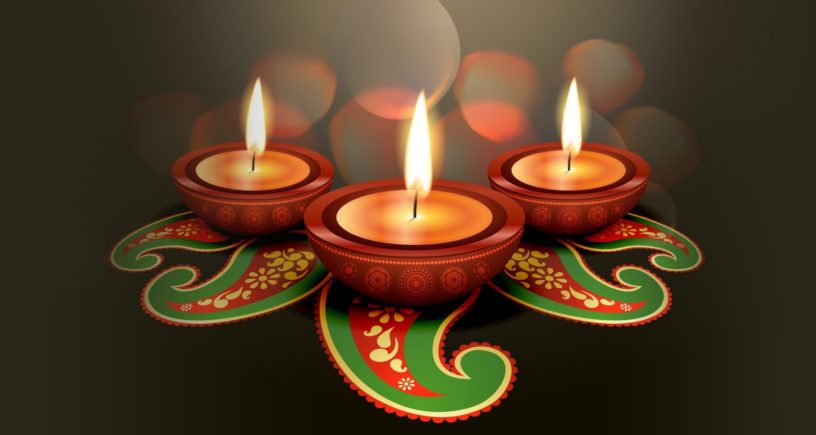Paramacharya of SWAHA, Pt. Hardeo Persad
Divali, the festival of lights, symbolises the journey from spiritual darkness to enlightenment. Many people have asked, what is the minimum number of deeyas that should be lit on Divali day? The answer is six. These six deeyas represent the six forms of spiritual wealth: tranquillity of mind, serenity, control of senses, endurance, faith and renunciation of selfish actions and desires. These values quieten the search for material wealth and its power over us. The ultimate objective of the material objects in this world is to attain a state of peace and fulfilment. These states elude us because they are not reached through the material world, which is transient. Material wealth is necessary for living but it must be controlled through these six forms of spiritual wealth.
It is often said that Divali celebrates the return of Shri Raam to Ayodhya in triumph after 14 years of exile. The citizens of Ayodhya lit up all the mountains, rivers and streams in joy. However, historically, Divali is celebrated in the month of Kaartik (October-November) while scriptures state that Shri Raam returned to Ayodhya in April-May. However, there is still much relevance in Shri Raam’s katha to Divali as a festival of lights and there is also a metaphysical application to every individual: Raama atma, atma hai Raam. Raam is atma; each individual is divinity embodied. As individuals, we are going through the forest of the world process as Shri Raam did. He journeyed to Lanka after defeating many demonic forces in the forests. He destroyed Kumbhkaran and Ravan; he coronated Vibheeshan as king of Lanka. He then returned to Ayodhya Puri as Raja Raam. In celebration of his victory, everywhere was alight with festivities.
Shri Raam’s life is the story of our life as humans. As we all go through this world process, Ravan is dominant; Ravan represents the limited human personality which exists in the human psychological makeup. Ravan exists in everyone and he represents passion and anger. Kumbhkaran represents lethargy and sluggishness. Vibheeshan is the state of piety and truth, sattvic prakriti. He is persecuted because Ravan dominates through passion and anger. Each person is the city of Ayodhya Puri and Raam is the state of spirituality. When Shri Raam’s spirituality destroyed the negative qualities, truth and piety reigned in the human psyche as Raam Rajya. When spirituality dominates and perfection exists, there is Divali, the festival of lights, in the outer as well as the inner world.
In Hindi, parvat is the spine but it also implies the mountain of mental advancement, glittering in each individual. There are six main chakras within the body: muladhara, svadishthana, manipura, anahata, vishuddha and ajna. The seventh, sahasraara chakra is said to be located above the crown of the head. The six chakras in the body are the six deeyas that exist within us. Spirituality must be developed to keep these inner deeyas alight. When spiritual perfection approaches, these six vortices of energy become activated and negativity no longer exists in us. Then, the mountain of mental advancement shines within us. The rivers, representing all the naadis, or channels of bioenergy within the subtle body, are energised. Life becomes a divine song.
When we celebrate Divali, we should be energised and able to face up to life’s challenges with a divine attitude. We must not remain at the superficial level of existence. While the social aspect of Divali is traditional and customary, it is important to apply the significance of Divali on a personal level. There must be a return to spirituality so that there is perfection: the reign of Shri Raam in Ayodhya, the human body. We must light the spiritual deeyas inside us that will lead to the joy and bliss of the Divine Being.




Arjoon Singh
A most inspirational and spiritual explanation of the meaning of Divali. Thanks for the knowledge and inspiration. Sita Ram. 🙏🕉️🙏🕉️